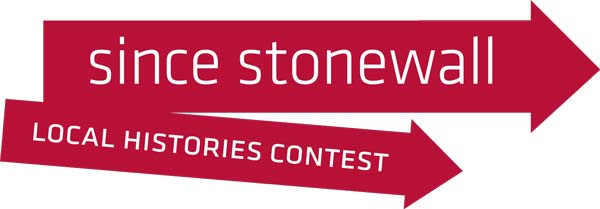Difference between revisions of "Guidelines"
(New page: ==Timeline:== - To be eligible for the contest, first drafts of exhibits must be posted by the 40th anniversary of the Stonewall riots on June 28,2009. - Revised exhibits must be compl...) |
|||
| Line 1: | Line 1: | ||
| + | [[Image:Stonewall1-3.jpg]] | ||
| + | |||
==Timeline:== | ==Timeline:== | ||
Revision as of 11:41, 19 March 2009
Timeline:
- To be eligible for the contest, first drafts of exhibits must be posted by the 40th anniversary of the Stonewall riots on June 28,2009.
- Revised exhibits must be completed by March 31, 2010.
- OutHistory will announce the top five exhibits on June 28, 2010.
Requirements:
- Your exhibit must have a title that includes the village, town, city or county and state and a time frame. Although we prefer that exhibits span the entire 40 year period, we will accept exhibits that begin after 1969. For example “In the Life, New York City, NY: Since Stonewall, June 28, 1969-present.”
- Your exhibit must have a main page that lists all the additionalpages in your exhibit.
- Every page must cite all sources using the Chicago Manual of Style Guide which can be found here:
http://www.chicagomanualofstyle.org/tools_citationguide.html
- Every page in your exhibit must have subject categories. These categories might include: “Gay, Lesbian, Transgender, AIDS, Parenting, Aging, Activism.”
- Every page in your exhibit must have a synopsis. For example: “This page discusses how the HIV/AIDS epidemic affected gay life in Chicago, IL.”
- Every page in your exhibit must have specified time-span. For example, “August 1981 – July 1992.”
- Every exhibit must have a contact person. You can post a contact person’s name and e-mail address on your page, or send it to outhistory@gc.cuny.edu.
Suggestions:
- There are multiple ways to structure a local history exhibit. Consider which structure would work best for the story you want to tell. You could, for example, base your 40-year exhibit around a few individuals’ life stories, notable local events or specific places in your community . You could document how different groups of people have experienced the last forty years differently.
- Find a wide array of sources on which to base your exhibit: newspaper articles, interviews, letters, artwork, maps, etc. Find historical documents and objects at through LGBTQ archives or local
historical societies.
A listing of LGBTQ archives across the country can be found here: http://www.archivists.org/saagroups/lagar/guide/index.html
- Try to make exhibits as dynamic as possible – include images, video and audio clips whenever possible. See OutHistory “Help” pages for instruction about how to do so.
- Try to design your exhibit so that a broad audience of internet users can understand and learn from it.
- You may want to include a timeline of events so that the history you are telling is clear.
For more information please contact the Project Coordinator at outhistory@gc.cuny.edu
